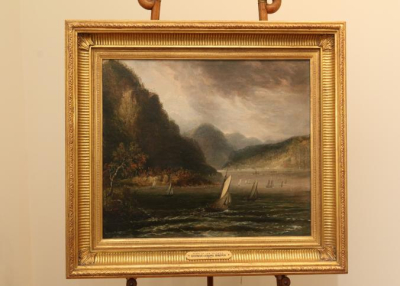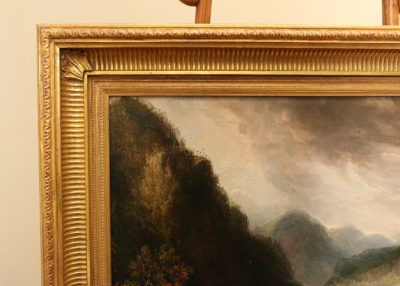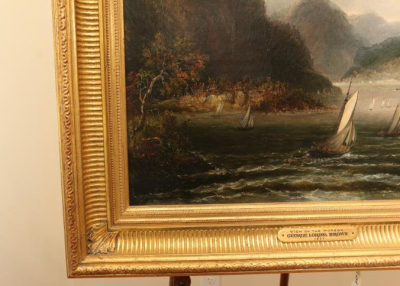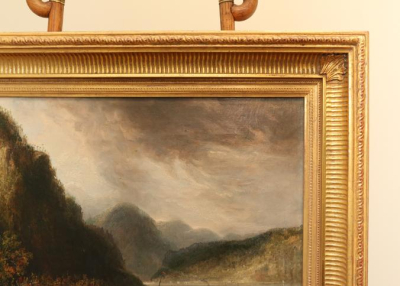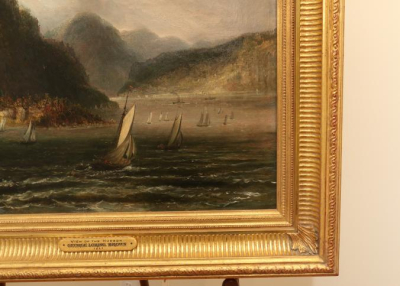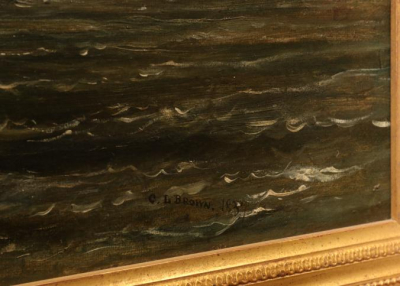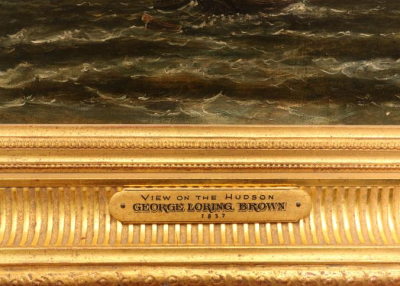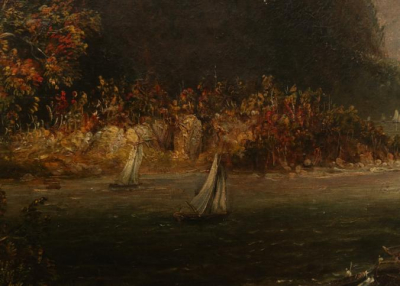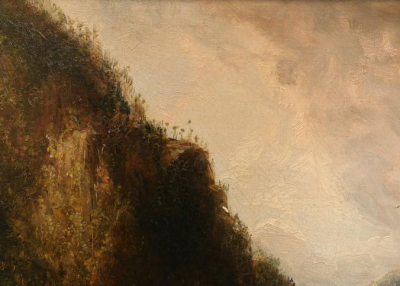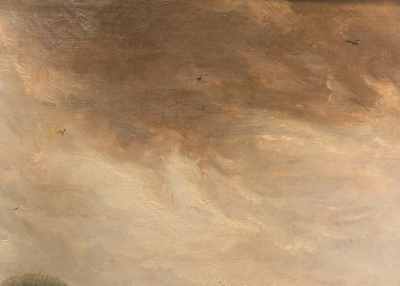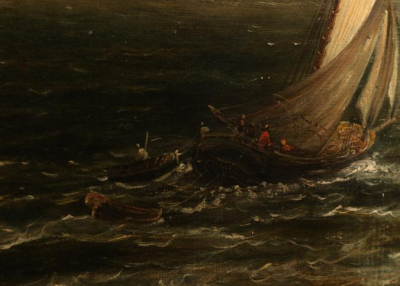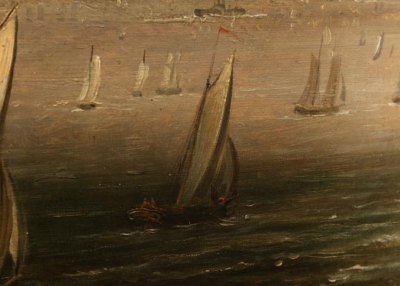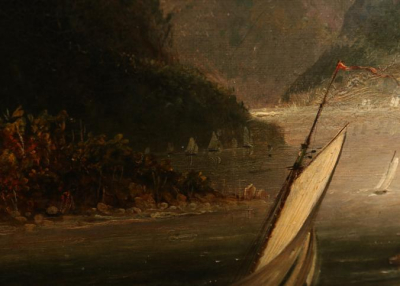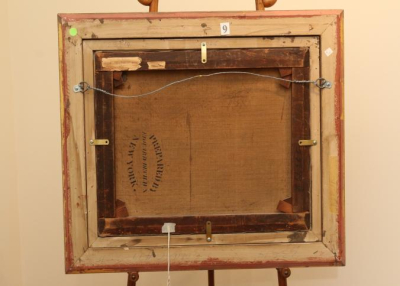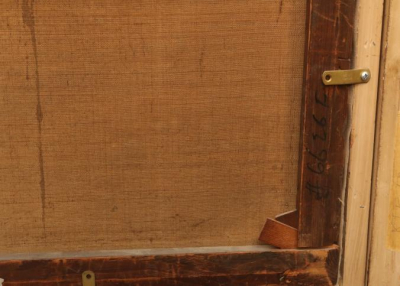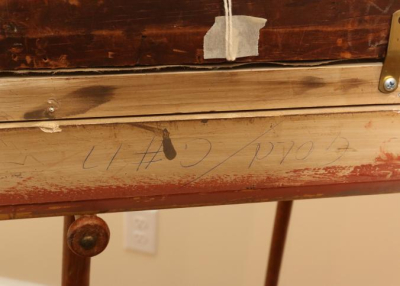Items located in Pleasant Valley, NY. Items include Hudson River School artwork, seascapes and framed lithographs. The Hudson River School of "Nature Painters" were painting from the mid-19ThC to the late 19thC. Although, they were actively painting views all across America, the scenes on the Hudson River are the most sought after. You have a rare opportunity to purchase these great "Views" now in this no-reserve auction. We also encourage you to come see us and preview the auction in-person.
Payment is due by Tuesday, May 23 at 3PM.
Pickup in Pleasant Valley, NY must be completed by Thursday, May 25 at 3PM.
All lots sold as is, where is. There is a 15% Buyers Premium for all lots purchased. Payment methods include cash, PayPal, MC, Visa, Discover or good check. You can make credit card payment online by going to your Member Area and selecting your invoice. To pay by PayPal, send money to info@aarauctions.com.
Payment is due by Tuesday, May 23 at 3PM.
Pickup in Pleasant Valley, NY must be completed by Thursday, May 25 at 3PM.
All lots sold as is, where is. There is a 15% Buyers Premium for all lots purchased. Payment methods include cash, PayPal, MC, Visa, Discover or good check. You can make credit card payment online by going to your Member Area and selecting your invoice. To pay by PayPal, send money to info@aarauctions.com.
Auction Info
Items located in Pleasant Valley, NY. Items include Hudson River School artwork, seascapes and framed lithographs. The Hudson River School of "Nature Painters" were painting from the mid-19ThC to the late 19thC. Although, they were actively painting views all across America, the scenes on the Hudson River are the most sought after. You have a rare opportunity to purchase these great "Views" now in this no-reserve auction. We also encourage you to come see us and preview the auction in-person.
Payment is due by Tuesday, May 23 at 3PM.
Pickup in Pleasant Valley, NY must be completed by Thursday, May 25 at 3PM.
All lots sold as is, where is. There is a 15% Buyers Premium for all lots purchased. Payment methods include cash, PayPal, MC, Visa, Discover or good check. You can make credit card payment online by going to your Member Area and selecting your invoice. To pay by PayPal, send money to info@aarauctions.com.
Payment is due by Tuesday, May 23 at 3PM.
Pickup in Pleasant Valley, NY must be completed by Thursday, May 25 at 3PM.
All lots sold as is, where is. There is a 15% Buyers Premium for all lots purchased. Payment methods include cash, PayPal, MC, Visa, Discover or good check. You can make credit card payment online by going to your Member Area and selecting your invoice. To pay by PayPal, send money to info@aarauctions.com.
Categories:
Framed 19thC o/c "George Loring Brown" (1814-1889) "View on the Hudson, 1837." Signed "G.L. Brown" and dated lower right. Featured in the Exhibition "This Perfect River-View": The Hudson River School and Contemporaries in Private Collections in the Highlands. The exhibit ran from July 20th to November 25, 2007 at the Putnam County Historical Society & Foundry School Museum in Cold Spring, NY. This painting was featured as plate #20 on page 37 of the 67 page catalog for the exhibition. It also bears the #9 tag from being on exhibit at the Historic Boscobel Home on the Hudson in Cold Spring, NY. Bio AskArt: Nicknamed "Claude" Brown for the French landscape painter Claude Lorraine whom he admired, Brown was among the most celebrated of American painters living abroad in the 19th century.
He was born in Boston, and decided as a youngster to make a living as an artist. He apprenticed to a wood engraver, Abel Bowen, and then illustrated children's books. A friend, noting his talent for landscape painting, encouraged him to devote himself to that subject, and the purchase of one of these by a wealthy Boston merchant allowed Brown to go to Europe in 1832.
He began his artistic career as an apprentice to Abel Bowen, and received further training from Eugene Isabey in Paris during his first trip to Europe in 1832-33.
On his return to Boston, Brown was inspired and encouraged by the aging Washington Allston, a painter of Romanticism. Brown exhibited frequently at the Boston Athenaeum. In 1839-40 he returned to Europe and settled in Italy, making a comfortable living for nearly twenty years by painting Italian landscapes to sell to American and European tourists.
In 1859, Brown returned to the United States, and in the 1860s and 1870s made many sketching trips to the White Mountains. Perhaps Brown's greatest New Hampshire scene was The Crown of New England, a huge panoramic view of Mount Washington, which was purchased by the Prince of Wales in 1861 (now unlocated, but a smaller version is in the Dartmouth College Art Galleries).
He primarily painted Italian scenes in later life, responding to the public's preference for his European views. Returning to America, he continued his theme of Italian scenery and also did eastern landscapes. He used precise brushstrokes and relatively thick paint and introduced from Europe a method known as "Macchiorelli," an impressionist style of painting in patches of color to emphasize the effects of light and dark.
Brown exhibited at the Boston Athenaeum, the Brooklyn Art Association, the Pennsylvania Academy of Fine Arts, and the National Academy of Design.
He died in Malden, Massachusetts 17" x 21" canvas
More Details
Framed 19thC o/c "George Loring Brown" (1814-1889) "View on the Hudson, 1837." Signed "G.L. Brown" and dated lower right. Featured in the Exhibition "This Perfect River-View": The Hudson River School and Contemporaries in Private Collections in the Highlands. The exhibit ran from July 20th to November 25, 2007 at the Putnam County Historical Society & Foundry School Museum in Cold Spring, NY. This painting was featured as plate #20 on page 37 of the 67 page catalog for the exhibition. It also bears the #9 tag from being on exhibit at the Historic Boscobel Home on the Hudson in Cold Spring, NY. Bio AskArt: Nicknamed "Claude" Brown for the French landscape painter Claude Lorraine whom he admired, Brown was among the most celebrated of American painters living abroad in the 19th century.
He was born in Boston, and decided as a youngster to make a living as an artist. He apprenticed to a wood engraver, Abel Bowen, and then illustrated children's books. A friend, noting his talent for landscape painting, encouraged him to devote himself to that subject, and the purchase of one of these by a wealthy Boston merchant allowed Brown to go to Europe in 1832.
He began his artistic career as an apprentice to Abel Bowen, and received further training from Eugene Isabey in Paris during his first trip to Europe in 1832-33.
On his return to Boston, Brown was inspired and encouraged by the aging Washington Allston, a painter of Romanticism. Brown exhibited frequently at the Boston Athenaeum. In 1839-40 he returned to Europe and settled in Italy, making a comfortable living for nearly twenty years by painting Italian landscapes to sell to American and European tourists.
In 1859, Brown returned to the United States, and in the 1860s and 1870s made many sketching trips to the White Mountains. Perhaps Brown's greatest New Hampshire scene was The Crown of New England, a huge panoramic view of Mount Washington, which was purchased by the Prince of Wales in 1861 (now unlocated, but a smaller version is in the Dartmouth College Art Galleries).
He primarily painted Italian scenes in later life, responding to the public's preference for his European views. Returning to America, he continued his theme of Italian scenery and also did eastern landscapes. He used precise brushstrokes and relatively thick paint and introduced from Europe a method known as "Macchiorelli," an impressionist style of painting in patches of color to emphasize the effects of light and dark.
Brown exhibited at the Boston Athenaeum, the Brooklyn Art Association, the Pennsylvania Academy of Fine Arts, and the National Academy of Design.
He died in Malden, Massachusetts 17" x 21" canvas
High Bid:
$6,200.00 – gringo84
Auction Type: One Lot
Quantity: 1
Bidding has closed on this lot























